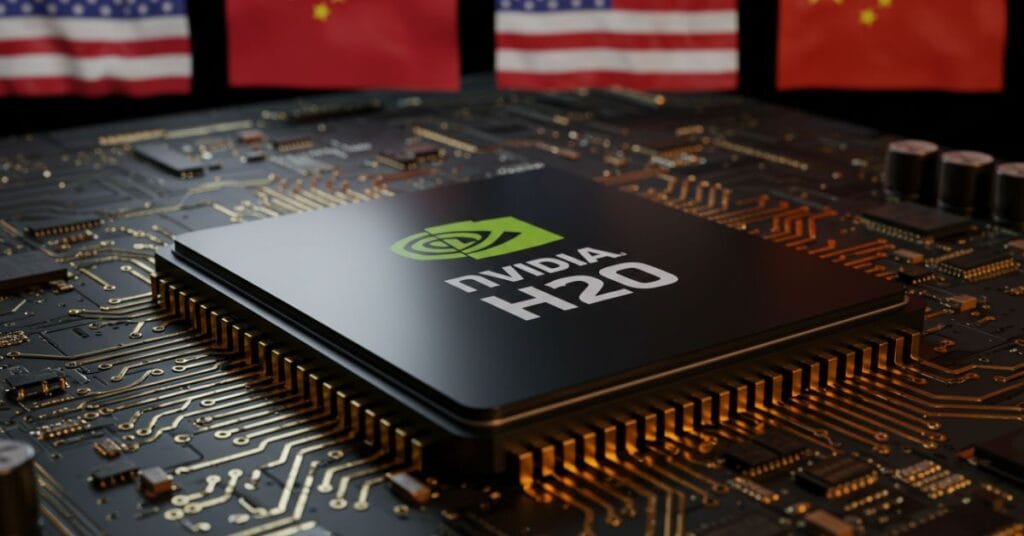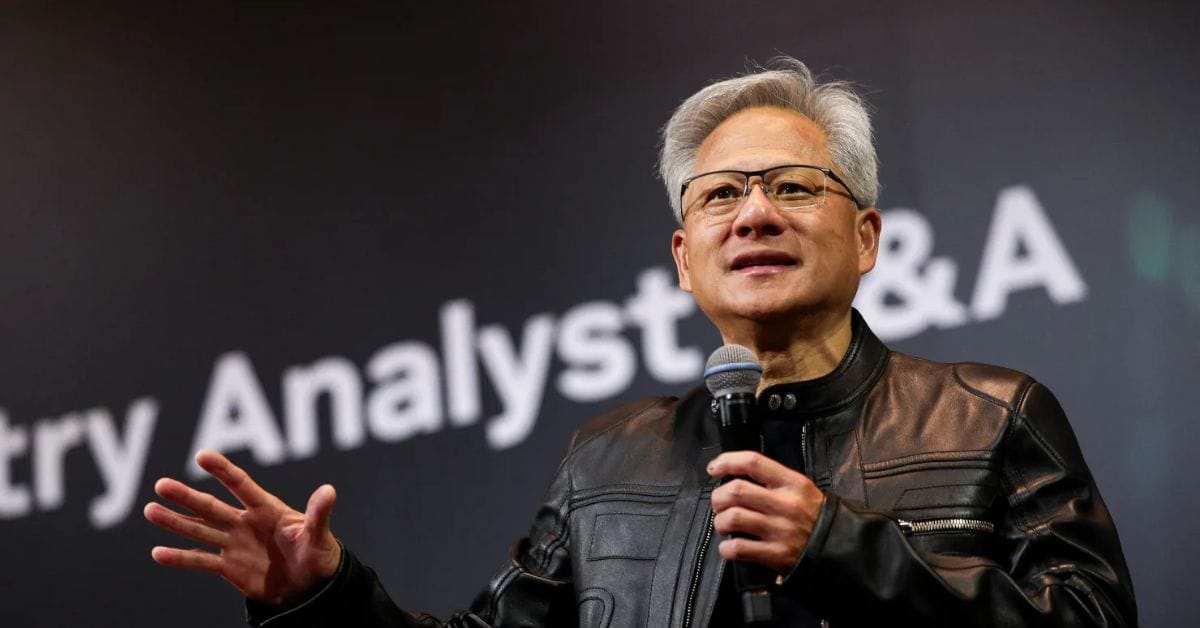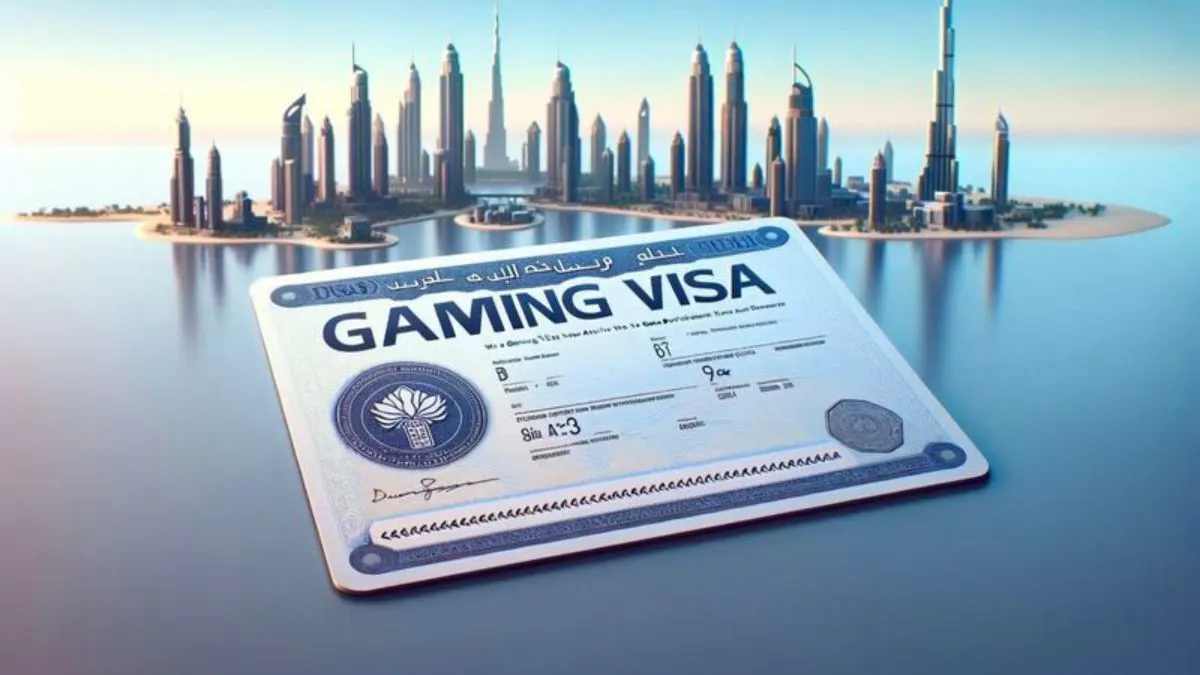The Ban Is Lifted—But the Battle Is Far from Over
Nvidia’s confirmation that it can resume sales of its H20 AI chips to Chinese clients marks a pivotal shift in the U.S.-China tech standoff. This is not just about one chip or one company—it’s a signal flare in the fog of war that is the global AI race.
The U.S. Department of Commerce’s decision to greenlight Nvidia’s H20 chip shipments to Chinese firms like Alibaba, Tencent, and Baidu reveals a recalibrated, strategic compromise: control without complete severance. As of July 2025, Nvidia is already preparing bulk shipments into the Chinese data center and enterprise AI market, bypassing what many saw as an irreversible embargo.
But this isn’t just a licensing update. It’s a re-ignition of a deeply competitive battle for silicon dominance in the era of artificial general intelligence (AGI), AI infrastructure, and military-grade compute capabilities.
Why the H20 Matters More Than You Think
The H20 isn’t Nvidia’s most powerful chip, but it is its most geopolitically relevant. Developed under the “Hopper” architecture, the H20 is a specialized, U.S.-compliant response to export control laws, designed specifically to navigate sanctions while maintaining Chinese market relevance.
Key specs of the Nvidia H20 (China Edition):
- Lowered interconnect bandwidth: To meet U.S. regulations on compute-to-network ratios
- Comparable tensor core counts to A100-class GPUs
- Optimized for large language models (LLMs) and AI inference workloads
- Restricted NVLink connectivity, throttled to sub-strategic thresholds
What makes the H20 crucial is its balance: powerful enough for China’s generative AI ambitions, but limited enough not to spark U.S. national security alarms. Nvidia’s chip engineers walked a tightrope—and Washington just signaled that they didn’t fall off.
How Nvidia Navigated Export Sanctions
Since late 2022, Nvidia’s AI chips like the A100, H100, and even the newer H200 have been under strict export control, prohibited from sales to China due to their potential dual-use (civil and military) capabilities.
Rather than retreat, Nvidia retooled.
- The H20, along with the L20 and L2 chips, was introduced in late 2023 as a “compliance chip” designed for China’s hyperscalers.
- In late 2024, reports surfaced that these were stuck in limbo due to shifting U.S. rules and delays in clearance.
- In July 2025, the U.S. quietly issued licenses allowing these sales to proceed, albeit under strict end-user documentation and compliance verification.
This calculated maneuver shows Nvidia’s dual mastery: innovation and regulatory diplomacy. And it’s a template for how future tech companies may navigate hostile geopolitical currents.
What This Means for China’s AI Boom
China’s tech giants are desperate for computing.
With over 200+ foundational models in development as of mid-2025 and intense state pressure to compete with OpenAI, Google DeepMind, and Anthropic, access to high-performance chips is not optional—it’s existential.
How the H20 will be used in China:
- Alibaba Cloud: Training Chinese-language LLMs and fine-tuning industry-specific GPT-style bots
- Tencent AI Lab: Running RLHF (Reinforcement Learning from Human Feedback) pipelines for WeChat AI and metaverse initiatives
- Baidu and iFlytek: Building sovereign AI infrastructure as part of the “China AI 2030” roadmap
This chip resumption comes as local Chinese firms struggle to scale up domestic alternatives like Huawei’s Ascend chips or Biren’s BR series. While impressive, these local chips still lag behind Nvidia in software stack maturity (CUDA, TensorRT) and efficiency.
The H20 re-entry essentially hands China a new breathing window—one that will accelerate AI deployment across cloud, fintech, robotics, and even surveillance systems.
Nvidia’s China Revenue Stream—Rescued Just in Time
For Nvidia, China is not just another market—it accounted for up to 20–25% of its data center revenue pre-ban.
In Q4 2024, Nvidia reported a 15% sequential drop in Asia-Pacific data center sales, largely due to delayed shipments to Chinese customers. The reapproval of the H20 instantly reinflates Nvidia’s short-term growth forecasts.
Expectations for Q3–Q4 2025:
- Resumption of $3–5B in deferred contracts
- Bulk orders from Huawei-free hyperscalers
- Share price likely to surge as investors factor in regained market access
Wall Street already priced Nvidia as an “AI arms dealer” to the Western world. With China re-added to its client list, the valuation narrative expands again.
The U.S. Balancing Act: Control vs. Economic Interest
The U.S. didn’t reverse course out of generosity. The decision reflects a complex calculation:
- Too strict, and China accelerates self-reliance
- Too lenient, and China gains a strategic edge in AGI and surveillance tech
The H20 deal signals a middle path—one that allows American firms to profit, but within parameters that limit potential national security threats.
Behind closed doors, it’s clear that:
- U.S. chipmakers lobbied heavily to resume controlled sales
- The Commerce Department aims to avoid driving China toward open retaliation
- There’s also concern that over-isolating China will fracture global tech standards and ecosystems
Nvidia’s limited return, therefore, is not a diplomatic thaw but a tactical stalemate.

Global Chip Market Dynamics Just Shifted Again
The impact ripples far beyond the U.S. and China.
For global markets:
- South Korea & Taiwan: Beneficiaries of supply chain ramp-up as Nvidia sources foundry and packaging capacity
- India: Gaining relevance as an AI compute hub—especially with Nvidia’s ongoing training hub partnership in Bengaluru
- Europe: Watching cautiously as it lags both the U.S. and China in foundational model deployment and chip sovereignty
The H20 saga exposes a new era in chip geopolitics, where silicon, not steel or oil, becomes the key strategic asset in a multipolar world.
What It Means for the Future of AI Regulation
This case sets a precedent for how AI hardware will be regulated globally. Expect more of the following in the coming years:
- “Compliance chips” engineered to meet political thresholds
- Dynamic licensing regimes based on real-time geopolitics
- Private-public lobbying alliances are driving policy changes behind the scenes
And most importantly:
- AI infrastructure will become as regulated as military exports.
The Nvidia-China example is just the first draft.
5 Burning Questions Answered
Q1: Why is the H20 chip allowed, but the H100 is still banned?
Because the H20 has a deliberately reduced interconnect speed and limited processing capacity, it avoids thresholds set by U.S. export rules. The H100 exceeds those, making it a potential security concern.
Q2: Will China still try to develop its chips?
Absolutely. This move gives Chinese firms temporary relief, but it does not replace the strategic need for long-term independence. Expect more funding for Huawei, Biren, and SMIC.
Q3: Does this mean U.S.-China tech relations are improving?
Not quite. This is more of a managed détente. The underlying rivalry remains. Washington’s goal is to slow, not stop, China’s AI growth.
Q4: How does this affect the average user or developer?
In China, developers now regain access to more efficient AI training tools and cloud GPUs. Globally, it may reduce chip scarcity and improve cloud computing availability.
Q5: What should investors watch next?
Look at Nvidia’s next earnings guidance, any updates to U.S. export control frameworks, and whether companies like AMD or Intel follow suit with China-compliant offerings.




2 Comments on “Nvidia Resumes H20 AI Chip Sales to China After U.S. Clearance—What It Means for Global AI, Tech Markets, and Geopolitics”